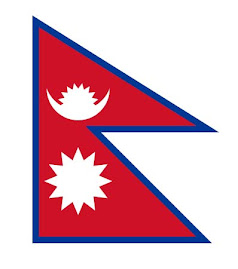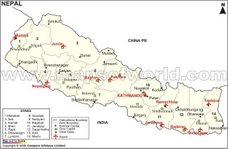Bhaktapur's main square, Durbar Square, houses the 55-window Palace which was constructed by King Bhupatindra Malla and was home to royalty until 1769. It is now a National Gallery. Close by is the Golden Gate which leads into Mulchok Court which is home to the Taleju Temple. This temple, like others in the main towns of the Kathmandu valley, is dedicated to the goddess Taleju Bhawani and includes shrines to the both Taleju Bhawani and Kumari. Entrance to the temple is restricted to Hindus and the goddess strictly cannot be photographed.
From time immemorial it lay on the trade route between Tibet/China and India. This position on the main caravan route made the town rich and prosperous: each autumn the traders from Tibet came with sheep ("changra"), fitting nicely with the main Nepali holidays, 'Dasain' (Hindi: Dussehra), when nearly everyone in Nepal sacrificed male animals to the goddess Durga. On the return trek the traders brought back to Tibet grains, sugar or Buddhist scriptures.

This prosperity fueled the cultural life: ie. the temple builders developed a Pagoda-style, spreading it through Tibet all the way to Japan. Finest of all is the five-tiered, heaven piercing Nyatapole.
Bhaktapur is a popular day-trip destination for tourists visiting Kathmandu. Lately, with more air-pollution in Kathmandu, more and more tourists are staying in Bhaktapur for a few days, before arrangements for trekking are finished. For foreign tourists the entry fee is NPR 750/$10; for nationals of SAARC-countries and China (sic!) the fee is NPR 50.















